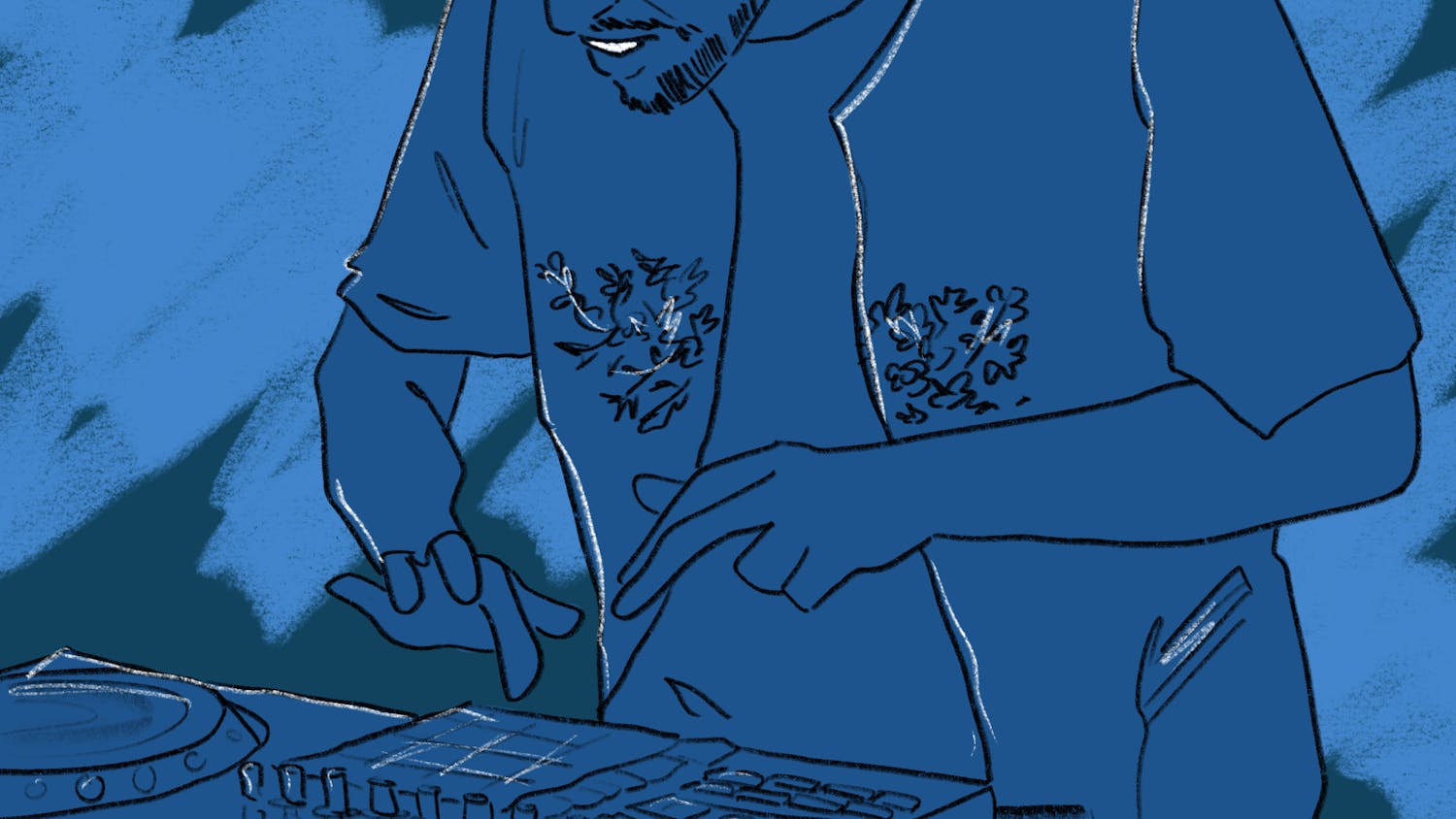Some children dream of being physicists, and some children dream of being artists, but growing up to be a physicist, pursuing a Ph.D. in quantum electronics and then deciding to create art is arguably a rare path. For Enrique Martínez Celaya, July’s featured artist at the Hood Museum of Art and a Montgomery Fellow at the College, lasers have been as much a part of his work as painting and sculpture.
Celaya, originally from Cuba, started training as an artist’s apprentice when he was 12 . As he pursued his Ph.D. in quantum electronics at the University of California at Berkeley, he encountered the artists who would inspire him to pursue art, a path that would ultimately bring him to the College after stops in Berlin, Chicago and southern California.
Hood Director Michael Taylor said that Celaya’s unique intellectual background has had an apparent effect on his art.
“His work is incredibly complex because he thinks like a scientist,” Taylor said. “He transcends the limits of, say, painting for example. That’s what gives the work its visual power. When we saw the images we thought ‘Wow! This will be stunning.’”
Stunning is an apt description, as much of Celaya’s work is dark, complex and eerie, full of twisted sculptures, images of animals attacking each other and haunting portraits of humanity and its flaws.
“It really haunts your memory,” Taylor said. “Once you see a piece of Enrique’s, you don’t forget it.”
Celaya’s work includes painting, large-scale sculpture and multimedia composition. Instead of titling each individual piece, the artist often prefers to arrange a mixture of works together in one room under the same title, creating a cohesive picture from seemingly disparate works. Celaya’s installation for the Hood “Burning as It Were a Lamp” features a bronze sculpture, two paintings and a series of mirrors.
Celaya will interact with students and professors in Hanover. He will give a lecture on his five most recent works on July 15, he will give a public gallery lecture about “Burning as It Were a Lamp,” the following week. He will also have drop-in hours in the Hop Garage where students can watch as he begins work on new projects, Taylor said.
As a Montgomery Fellow Celaya will speak not only to art-specific classes but also to science classes and groups across campus.
Montgomery Fellows Program Director Chris Wohlforth said the process to bring artists like Celaya can be lengthy. The program’s fellow steering committee meets twice a year, and candidates must have interdisciplinary support from more than one department. She said that the fellows can range from presidents to Nobel-winning writers.
Taylor said that Celaya’s background outside of art and his talent made him an excellent candidate.
“He has this interdisciplinary knowledge that you just can’t beat,” Taylor said. “He’s such an electrifying force.”
Art history minor Kate Hamilton ’16 said that she plans to be among the first to see Celaya’s exhibit.
“It’s always exciting for Dartmouth students to interact with contemporary art,” Hamilton said. “In art history we spend a lot of time focusing on the artists themselves and the social circumstances they lived in. Getting to stand in the studio while it’s happening would be a fantastic opportunity for both student and artist.”
Wohlforth said he hopes that students will take advantage of this opportunity.
“Identity plays a big role in his work, especially the sense of who you are and what you do,” she said.
Hamilton said she thinks Celaya’s interdisciplinary background will draw students to his work.
In addition to his background in the sciences, Celaya founded Whale and Star Press, which publishes books on the arts and critical theory.
Celaya’s exhibit will run in the Hood’s Harrington Gallery from July 12 through August 10.



